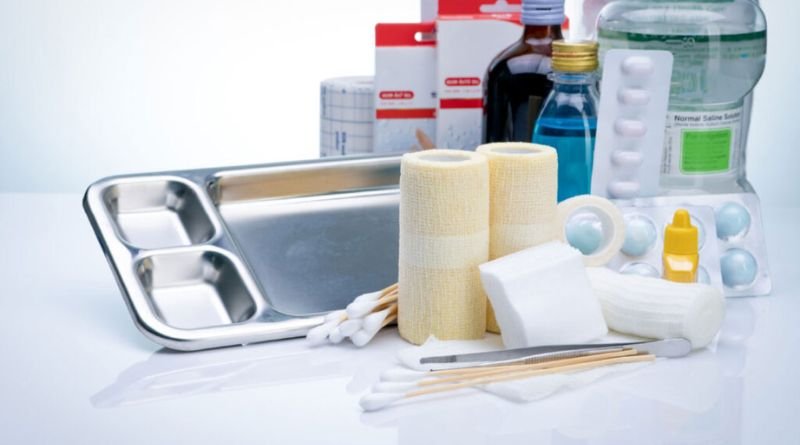Wound care, a critical aspect of healthcare, has evolved significantly. This article aims to provide an overview of modern wound care products, focusing on their types, applications, and innovations.
Table of Contents
Understanding Wounds
Wounds, varying from acute to chronic, surgical to traumatic, demand specific care strategies. The wound healing process, typically involving inflammation, tissue formation, and remodeling, can be influenced by factors like age, nutrition, and existing health conditions.
Wound Assessment
Effective wound care begins with proper assessment. Techniques range from visual inspection to advanced imaging. Classification based on size, depth, and infection status is crucial, as is considering the patient’s pain and psychological state.
Wound Care Products
Traditional products like gauze and bandages are now complemented by advanced options. Hydrogels, alginates, and foam dressings offer better healing environments. Antimicrobial dressings and growth factor therapies cater to complex wound types.
Modern Innovations
The field is witnessing a surge in innovations. Smart wound care products with sensors provide real-time healing data. Regenerative medicine, including stem cell therapy and tissue engineering, and nanotechnology applications like nanofibers, are groundbreaking.
Clinical Management
Managing infections with antiseptics and antibiotics, and addressing pain, are vital. A multidisciplinary approach involving various healthcare professionals ensures comprehensive care.
Case Studies and Applications
The application of modern wound care products varies significantly depending on the type of wound. For instance, chronic wounds like diabetic foot ulcers require a different approach compared to acute surgical wounds. Diabetic ulcers, often complicated by poor circulation and neuropathy, benefit greatly from advanced dressings that maintain a moist healing environment and can be combined with offloading techniques to reduce pressure.
In surgical wound care, the focus is on preventing infection and promoting rapid healing. Antimicrobial dressings and those capable of managing higher exudate levels are commonly used. The use of postoperative negative pressure wound therapy (NPWT) has shown to significantly reduce surgical site infections and improve healing times.
Traumatic wounds, such as those seen in emergency settings, require immediate attention to prevent infection and further damage. Advanced hemostatic agents and dressings that can rapidly control bleeding are vital in the initial management of these wounds. The ongoing care of traumatic wounds often involves a combination of infection control measures and regenerative techniques to facilitate tissue repair and healing.
Ethical and Legal Considerations
Wound care involves ethical decisions regarding patient consent, autonomy, and the use of experimental treatments. Navigating regulatory landscapes and addressing ethical dilemmas is essential for practitioners.
Future Directions in Wound Care
The future of wound care holds promising advancements that are set to revolutionize how wounds are treated. Research trends are increasingly focusing on the integration of technology in wound management. Innovations such as smart dressings equipped with sensors can monitor wound moisture, temperature, and pH levels, providing real-time data to healthcare providers for more informed decision-making. This technology not only improves wound monitoring but also enhances patient comfort by reducing the need for frequent dressing changes.
Another exciting area of development is the use of biotechnology in wound healing. Regenerative medicine, especially the use of stem cells and growth factors, is being explored to promote healing in chronic wounds that are otherwise difficult to treat. These advanced therapies could significantly reduce healing times and improve the quality of life for patients with chronic wounds.
Additionally, the field of nanotechnology is showing potential in wound care, particularly in the development of nanofiber-based dressings. These dressings can deliver drugs directly to the wound site, offering targeted therapy while minimizing systemic side effects. The future of wound care also involves a global perspective, addressing the challenges of making these advanced treatments accessible and cost-effective across different healthcare systems, thus ensuring equitable patient care worldwide.
The field of wound care is rapidly evolving, with advanced products and techniques continuously emerging. This brief overview underscores the importance of ongoing research, innovation, and ethical practice in enhancing patient outcomes in wound care.






